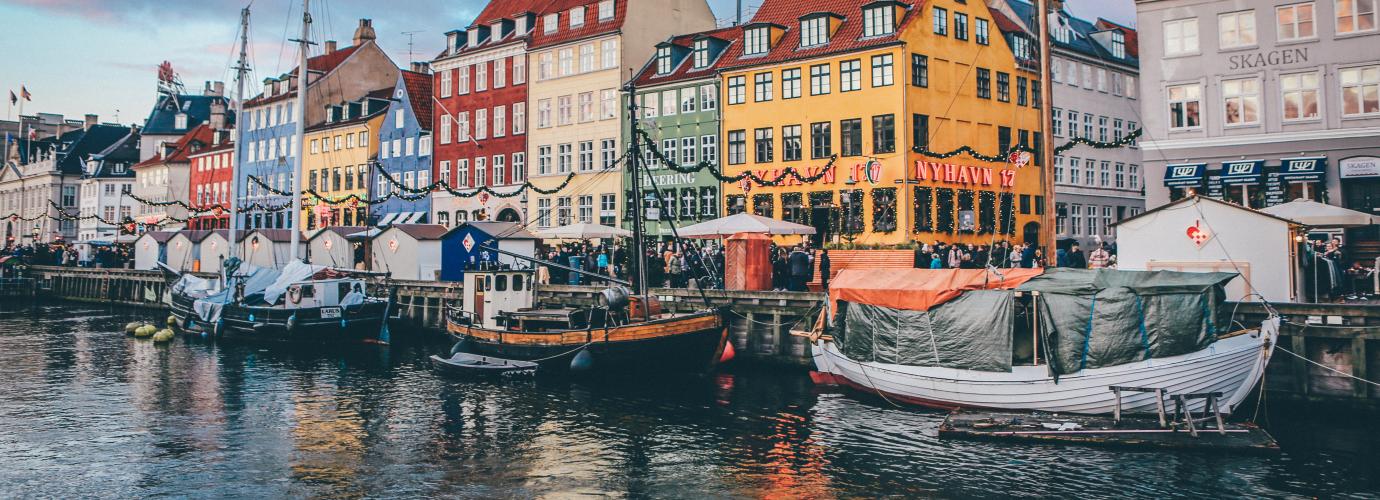Historical overview
The Viking Ages and the Middle Ages
It is assumed that the first Danes entered the Northern area we know to be Denmark around 10,000 BC. The Kingdom of Denmark and the unification of the country dates back to around 700 AD.
The Viking Age constitutes a turning point as several phenomena took place: the power became centralised under one king, the Christian faith replaced Norse beliefs, market economy rose, agriculture intensified and cities grew in size and number. Together, these phenomena mark the beginning for the Danish state formation.
During the Viking Ages and the Middle Ages, Denmark was an expansionist power. Throughout the Viking Ages, this manifests itself in the shape of the Viking expeditions, which aimed for trade, income and conquering new land including looting.
The Danish supremacy reached its peak during the Middle Ages when the Kalmar Union in 1397 gathered Denmark, Norway and Sweden under the Danish crown. The Kalmar Union lasted until 1523.
From 1864 to 1945
In 1864, Denmark lost its three duchies Slesvig, Holsten and Lauenborg at the Southern border to Germany. However, in 1920 the Northern part of Slesvig returned to Denmark after a referendum.
In 1849, King Frederik VII signed the first Constitution, which replaced absolute monarchy with constitutional monarchy. By doing so, he introduced democracy with free elections to the Danish Parliament, which at the time consisted of two chambers (Landstinget and Folketinget). With the change of the political system in 1901, the King acknowledged parliamentarianism meaning that the majority of the members of Folketinget supports the government. Since 1953, the Danish Parliament has consisted of one chamber (Folketinget) with 179 members of which two represent the Faroe Islands and two represent Greenland.
During World War I, Denmark remained neutral. In 1915, a constitutional reform granted women the right to vote. During World War II, the German Nazi regime occupied Denmark from 9 April 1940 until 5 May 1945.
Economic growth and the welfare state
The post-war era was characterised by economic growth. In the 1960s, the Danish welfare state evolved resulting in:
- More day care facilities, care homes and hospitals;
- Expansion of the education system;
- More benefits to remedy illnesses, incapacity for work and disabilities;
- Cost-free education;
- Cost-free medical care.
One of the results was an increase in the education level in general and women became better educated.
Danish membership of the European Union
Denmark became a member of the European Community (today the European Union) in 1973 after a referendum in 1972 in which 63.3 per cent voted in favour of Danish membership.
In 1992, a majority of 50.7 per cent voted against the Treaty of the European Union (Treaty of Maastricht). This resulted in the so-called National Compromise, which contains four opt-outs:
- The Euro opt-out;
- The defence opt-out;
- The Justice and Home affairs opt-out;
- The opt-out on citizenship.
There have been several referendums regarding the opt-outs since their enactment. In June 2022, a majority of 66.9 per cent voted in favour of the abolition of the defence opt-out.
References
Bibliography
Denmark.dk: The history of Denmark. [Accessed 12 May 2023]
EU Information Centre, 2021: The Danish opt-outs from EU cooperation. [Accessed 12 May 2023]
The Danish Parliament (Folketinget): The Constitution and the Danish democracy (Grundloven og det danske demokrati). [Accessed 12 May 2023]

